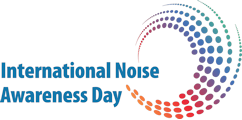noise and music facts (a warning)
Earbuds and headphones seem to be standard equipment for commuters, joggers, health club patrons, factory workers, and office workers. Just about any smartphone or mp3 player is capable of hurting your hearing.
If played too loud, music can cause permanent and irreversible damage to our hearing. Whether the music is at a concert, from a classical orchestra, a school band, home or car stereo, work as a sound engineer, or headphones, if it’s too loud for too long, hearing damage is inevitable.
earbuds and headphones: the facts
The Center for Hearing and Communication conducted a study in conjunction with the City University of New York and found the maximum output level of personal stereo systems to be 112 dBA. Although subjects interviewed set their volume at safe listening levels in quiet settings, they reported increasing the volume to hazardous levels while riding the subway, exercising, or walking to and from work. Although workplace guidelines exist to protect workers’ hearing, the same protection is not available for the use of earbuds and headphones. The consumer must, therefore, take full responsibility for preserving hearing.
music levels
The volume at rock concerts usually clocks in between 110 – 120 dBA, music levels of certain orchestral instruments can be in excess of 126 dBA at the ear, and new car stereos can blast at levels above 140 dBA. Studies show that 37% of rock musicians and 52% of classical musicians have a measurable hearing loss, and a subsequent study found that 26% of high school seniors who played in the band had a measurable hearing loss as compared to 13% of high school seniors who did not play in a band.
Music-induced hearing loss cannot only affect the enjoyment of music but may also threaten a musician’s career. In addition to a loss of hearing, other damage may include tinnitus and difficulty in pitch perception. Certain musical instruments carry specific risk: the left ear is typically worse for violists, violinists, and drummers, while the right ear is typically worse for flute and piccolo players. In an orchestra, school band or rock group, hearing loss may also be associated with the location of another musician’s instrument in relation to your ear (i.e., a trumpet or trombone player may be seated next to you and cause risk to your hearing).
what to do
Set your system at a comfortable level in a quiet room. Do not turn it up when you are in a noisy setting to “block out” the noise. This will only add to the noise and increase the risk to your hearing.
Follow this simple rule of thumb: If you cannot hear other people talking when you are wearing headphones or if other people have to shout to you to be heard at three feet away while the headphones are on, it is too loud and could be damaging to your hearing.
Limit the amount of time you use the personal stereo system with headphones.
for performing groups
Environmental changes can reduce risk. Trumpet players on risers send the damaging energy above other musicians’ heads. Moving the band further back on the stage will allow the band to play at lower levels, the audience reflects some of the sound. Stringed instrument players should not sit beneath under hangs; it will allow for less intense playing without high frequency absorption of the roof. Finally, elevating the speakers will allow sound engineers to set the volume at lower levels.
Resources for the Music Lover: H.E.A.R. – Hearing Education and Awareness For Rockers www.hearnet.com
